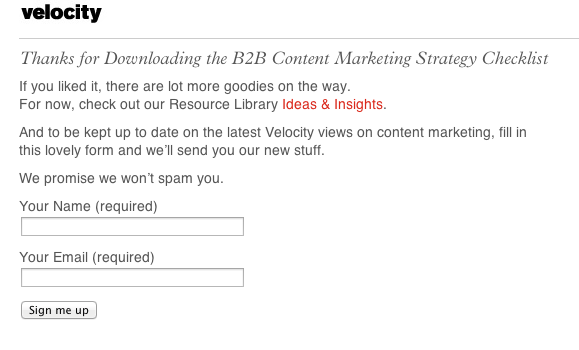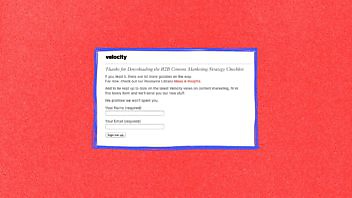To gate or not to gate? That’s not the question, really.
At least not the sole question we should ask ourselves when we’re about to publish our next new piece of content.
When it comes to gating, we all have an opinion – there are so many schools of thought. Just to name a few:
- Let’s gate everything we have.
- Let’s give everything away for free.
- Let’s only gate eBooks.
- Let’s only gate MOFU (middle of funnel) eBooks.
- Let’s only gate assets that have 20+ pages.
The list goes on. And to spare you another interesting and never-ending debate, I am not even going to go into the amount of form fields your gate should consist of. Because that’s really a whole different kettle of fish.
In short, if you don’t gate, you don’t capture any data, but more people might actually read your content.
If you do gate, you’ll obviously get names you’re after. Sometimes really good ones. From really good prospects. But often enough you’ll get Mickey Mouse, Pocahontas or Peter Pan, or students who don’t really give a shit about what you do. To put it into nicer words – there are people out there who’ll give you their email address but who are not very likely to buy from you nor would they like to be “guided through your sales funnel” (aka your nurture programme). Sorry to be the one breaking this news.
And this is where the alternative comes in. What about putting the gate after they’ve consumed your content? It worked a $300million miracle for a commerce site (well ok, it was a slightly different but similar experiment) so why shouldn’t it work for you and your content as well?
And, as marketers we often talk about “earning the right to engage”. So what about earning the right to get an email address (which is a fundamental part of engagement)?
To test this thought, we ran an experiment here at Velocity with our own content. Since Neil (the representative of let’s gate all of our educational content) lost the debate to Doug (the hippie who believes all content should be free), our starting point was ungated vs. post-consumption gate.
We ran an A/B split test on our main three “eBooks”: The content marketing workbook, the B2B Manifesto and the Content Marketing Strategy checklist. 50% of the page visitors didn’t receive a follow-up “sign up to our newsletter” CTA after downloading the asset (Group A), the other 50% did (Group B).

This is what Group B saw after downloading the B2B Content Marketing Strategy Checklist
And the results were pretty clear in all three instances: the post-consumption gate was the winner.
In total, only 8% of Group A ended up signing up to our newsletter, whereas 50% of Group B signed up to our database. Yes, 50%.
The experiment taught me a few valuable things:
- Giving people a choice is good and fair marketing. (Even Doug agrees with this option.)
- People are actually willing to leave their details after consuming your content.
- The ones who leave their details, are usually the ones of “better quality”. The people who actually care about what you do and have to say.
In retrospect, why would you actually want an email address from people who are not genuinely interested in your content anyway?
Therefore, my appeal to everyone, screw the “pre-download” gate: give the content away for free and earn the right to receive an email. It’s a win win. And your audience will be thankful for being given a choice.

Enjoyed this article?
Take part in the discussion








Comments
Sue Witkowksi July 31st, 2014
Once signed up, do you think that the customer should receive an automated or a personal ‘thanks for signing up’ type email or not send anything until the new stuff is available?